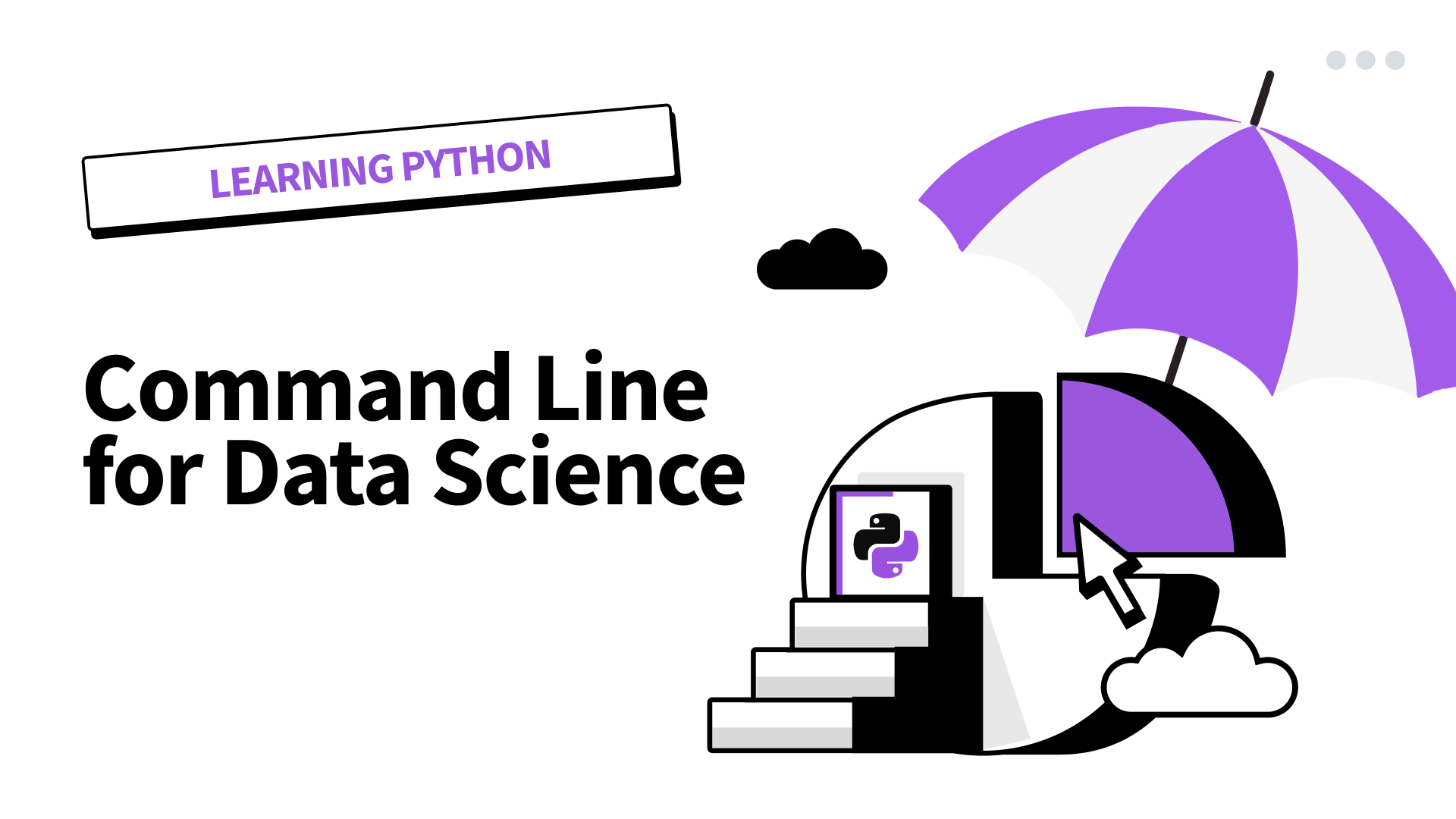Cyber Week Deal: Save $670 Off Lifetime Plan & Build a Future-Proof Data Career
The Dataquest Download
Level up your data and AI skills, one newsletter at a time.
Hello, Dataquesters!
In recent editions, we’ve been focused on Python and data cleaning. In this edition, we’ll shift our focus to another tool for data science that, sadly, many learners often overlook: using the command line. As someone who started computing before graphical user interfaces were common, I’ve seen how powerful command-line tools can be. Knowing how to navigate file systems, process text data, and run Python scripts efficiently is just the tip of the iceberg when it comes to what the command line can do. Having a solid grasp of what’s possible will enhance your data analysis capabilities and give you more control over your work.
When I first started using the command line, I was amazed by how much faster I could work. Tasks that used to take hours could now be completed in minutes. I remember the first time I used standard command-line text tools to process a large text file. What would have been a tedious, manual task in Excel became a one-line command that finished in seconds.
The command line is about more than just speed, though. It’s about precision and control. When I started using command-line tools to standardize data formats across multiple files, I could ensure that my projects were consistent and accurate. This eliminated concerns about missing files or making inconsistent changes.
On top of all that, using bash scripts to automate the downloading and initial processing of data from various sources has greatly improved my workflow. What used to be a daily chore became a simple, scheduled task. This saved time and reduced the likelihood of human error in my data pipeline.
Learning to manage file permissions via the command line has also improved the security and organization of my collaborative data projects. I can ensure that sensitive data is only accessible to the right people, all with a few simple commands.
One of the most valuable aspects of the command line is how well it integrates with other tools. Running Python scripts from the command line makes it easy to schedule regular data updates and integrate with other tools, making your data pipeline more efficient. It’s like having a central control system for your data workflow.
If you’re interested in starting your journey to learning the command line, I have good news. Our Command Line for Data Science course is designed to take you from novice to proficient, covering everything from basic navigation to advanced text processing. You’ll learn how to:
- Navigate and manage file systems efficiently
- Process and clean text data using standard command-line tools
- Execute Python scripts directly from the command line
- Modify user permissions to enhance file and data security
- Apply command-line skills to speed up common data analysis tasks
The course offers a browser-based learning environment, so you can start practicing immediately without any setup complications.
Remember, learning the command line is about more than just learning commands. It’s about changing how you approach data challenges. As you progress through the course, think about how you can apply these skills to your current projects. Could you use a bash script to automate a repetitive task? Might command-line text tools help you clean up that messy CSV file more efficiently? Feel free to share your thoughts in the Dataquest Community.
I look forward to seeing how you’ll transform your data workflow with these new skills. The command line may seem challenging at first, but I promise you, it’s well worth the effort! You’ll be able to work more efficiently, automate tasks, and secure your data pipeline.
Happy command-lining, Dataquesters!
Mike

|
What We're Reading
|
📖 AI vs. Machine Learning vs. Deep Learning Learn the key differences between AI, machine learning, and deep learning in this concise article, offering a clear breakdown of how these technologies connect and differ. Read more 📖 Python’s f-strings vs. str() Explore the computational differences between Python’s f-strings and 📖 A.I. and Creators: The Future of Tech and Creativity This report shows how creators are adopting AI, with 90% feeling they’re not fully utilizing its capabilities. Key benefits include time savings and reaching global audiences with AI translations. Many believe AI will be essential in creative industries, but want clear guidelines for responsible use. Read more |
Dataquest Webinars
New to Dataquest? Not sure where to start? Python, Excel, SQL–you pick.
Whether you’re just starting out or looking to break into the data field, mastering Python, Excel, or SQL will give you the foundation you need. Watch the recordings of our recent webinars, where we guide you through each skill and explain why they’re essential in today’s data-driven world. You’ll also get tips on overcoming imposter syndrome and advice on what to do next after completing your course.
Success with Dataquest: A Talk with our CEO – Watch now
Introduction to Python Programming – Watch now
Data Analysis with Excel – Watch now
SQL Fundamentals – Watch now
DQ Resources
|
📌 Complete Guide to SQL ― A collection of tutorials, practice problems, a handy cheat sheet, guided projects, and frequently asked questions. Click here 📌 How to Learn Python (Step-by-Step) ― This article covers proven techniques that will save you time and stress, helping you learn Python the right way in 5 steps. Click here 📌 60+ Python Project Ideas ― A curated list of fun and rewarding Python projects to help you apply your skills in real-world scenarios. Perfect for learners at all levels. Click here |
Give 20%, Get $20: Time to Refer a Friend!
Give 20% Get $20
Now is the perfect time to share Dataquest with a friend. Gift a 20% discount, and for every friend who subscribes, earn a $20 bonus. Use your bonuses for digital gift cards, prepaid cards, or donate to charity. Your choice! Click here
Community highlights
Project Spotlight
Sharing and reviewing others’ projects is one of the best things you can do to sharpen your skills. Twice a month we will share a project from the community. The top pick wins a $20 gift card!
In this edition, we spotlight Leila Saffarian‘s beautifully crafted Power BI dashboard, Life Expectancy and GDP Variation Over Time across four world regions. Leila’s thoughtful color choices and expert use of contrasts make the dashboard visually striking and immediately informative, offering clear insights at a glance.
|
Want your project in the spotlight? Share it in the community. |
Ask Our Community
|
This week, we’re spotlighting the question, “The courses at Dataquest are great, but I feel a bit confused and have trouble applying it to my own project. I can complete a project in data quest because of guided text, but outside it, I find it a bit hard to analyze data on my own. What should I do?” along with the top advice from our Community. Do you have insights to share? Join the conversation |
|
Wan Zulfikri (Learning Assistant) My current strategy is mainly about pulling myself back from being too overwhelmed by the sheer amount of things I don’t understand and just take very simple steps one at a time. By very simple I mean if I can’t immediately do it right now, it’s probably not simple and is too big for me to handle at once. What I’m doing currently:
I don’t set a maximum to the amount of things I do per day, but I do set a minimum and the minimum is as small as needed to make myself do something instead of nothing. If I’m stuck on an analysis, I tend to go into research mode and read other people’s analysis. For example, for the CPI analysis, I can read the CPI 2021 report to see what analysis is possible. Yeah, there’s a lot of “I” in my replies because I’m not sure how applicable my methods are for someone else, or whether it answers your question. I hope it’s somewhat helpful. |
High-fives from Vik, Celeste, Anna P, Anna S, Anishta, Bruno, Elena, Mike, Daniel, and Brayan.
